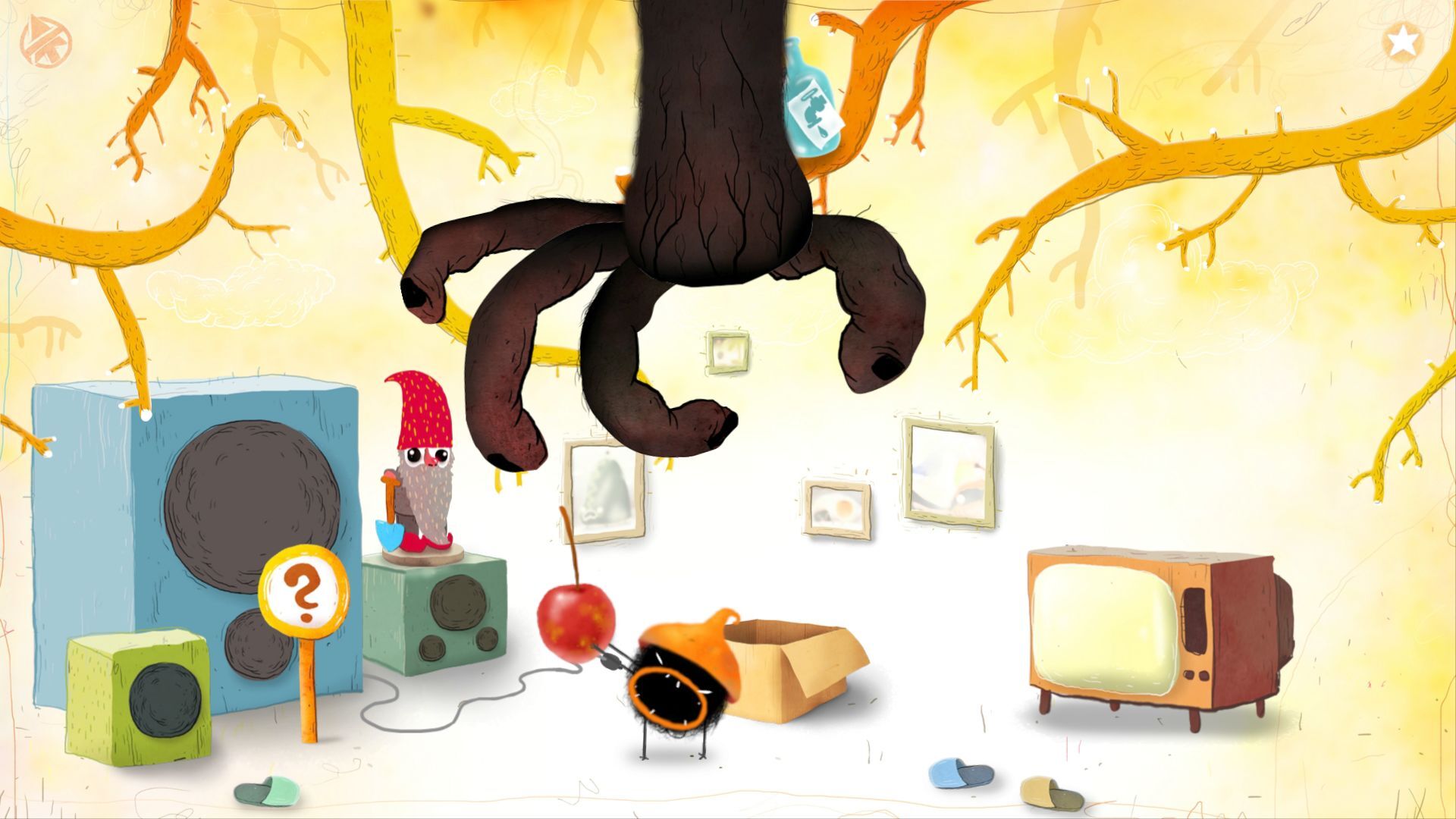Lost in Play Review
Lost in Play is another experiment at making a new kind of adventure game. Here we are far from the retro efforts like Thimbleweed Park or the recent Hob’s Barrow where the focus is on so-called pixel art. Lost in Play is all about extremely high “production values”, as the gaming journalists like to say. It’s almost an interactive cartoon (with vector based characters, as far as I can see), featuring very smooth and detailed animations. It’s a wonder to look at.

The theme of the game is imagination. You play alternatively the role of two kids, a brother and a sister (both unnamed), who switch from the real world to an imaginary one at a moment’s notice. In the imaginary world, they are chased by monsters, make deals with goblins, mount mythical animals, and go on far away adventures. Sometimes the two worlds mix together (in their mind, everyone else is oblivious to it) which makes for entertaining scenes.

At some point of the game, they end up being stuck in the imaginary world (hence the title of the game), and go on a quest to return home at all costs.
It’s extremely easy to play - a point’n click without any dialogue. The kids sometimes make comments in an invented language, so most of the clues are visual by nature (no text or subtitles to guide you). The gameplay then consists of puzzles to solve one after the other, usually across several horizontal screens (with back and forth needed) and objects to grab, use and combine. Other challenges consist in logic-based puzzles, such as the one shown in the screenshot below, where you have to find the right path that will make you escape the monster. While there is a variety of problems to solve, there’s nothing too new to mention. The puzzles themselves are typically easy enough - but I did get stuck on a few of them - this is when the “hint” function can be handy to give you a critical piece of info to get you closer to the solution (you can get such hints by a long button press).

It’s not very long. About 5 hours will get you to the end. Around the end there’s a kind of cinematic showing additional challenges that our protagonists go through to reach the final stage, in a trailer-like format. This tells me that the game developers had a lot more ideas for extra scenes, and maybe some of them just did not make it in the final version of the game (lack of time? Director’s decision?).
Overall, it’s very charming. In many ways, Lost in Play reminds me a lot of Chuchel From Ammanita Design. You don’t know Chuchel? Well, it’s a point’n click adventure game where, once again, there’s no dialogue: everything is explained visually and through various sounds, and it’s borderline crazy in everything it does.

It’s actually more tricky than it sounds to make things “obvious” for everyone across different cultures. Chuchel was great in many ways: great characters, great design, absolutely unhinged ideas… but lacked an actual story: everything felt like a collection of separates scenes that could have been in just any kind of order.
I’d give a similar diagnosis for Lost in Play. There’s a very thin thread that connects every scene, but by large they could have just been in almost any order. It’s a bit of a shame, as I am reminded of excellent games such as Limbo or Inside that it’s possible to tell a complex story, with a clear development from start to end, without actually saying anything. They fall in a different genre but they still are adventure games with a clear focus on (passive) narration.

Another difference to point out: Chuchel was clearly aimed at small kids (or could at least be played by them, since a lot of the fun came from clicking on just about anything and seeing the reaction of the different protagonists), while Lost in Play is a bit more elaborate in its puzzles. Probably more suited for early teenagers than your average 5 years old.
So, my summary: fantastic art, classic puzzles, yet lacking story-wise. Now just fix the story part, and we might have a winner next time around.

The Linux and Steam Deck Side of things
The game works fine with the default Proton version (7.x). It also works great on the Steam Deck, there’s nothing to tweak, it will run and look great at the default resolution there (i.e. Verified). I started the game on PC and finished it on the Steam Deck. On desktop, note that it does not support a lot of different resolutions. Ultra wide is NOT supported, on my UWD screen the game defaults to the max resolution of 2560*1440, which means I have black bars left and right.

Not a big deal for this kind of game since it’s 2D-based, but I thought I would mention it anyway. Note that the game has very few settings and you need to hit ALT+ENTER on your keyboard if you want to go in Window mode instead of full screen. It will run on any kind of device (even without discrete GPU), as it’s not very demanding.
